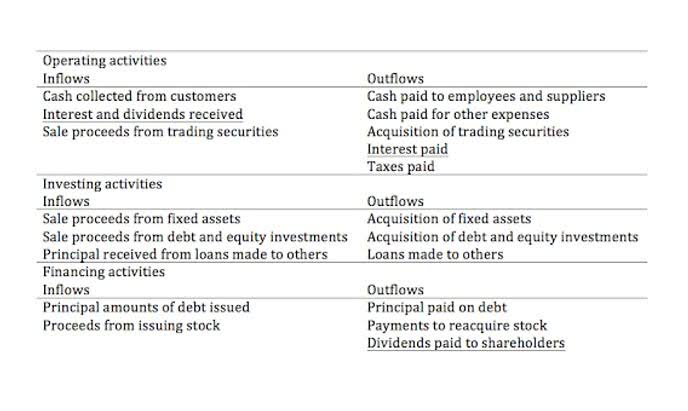
They provide the value now of 1 received at the end of period n at a discount rate of i%. As discussed above, an annuity table helps you determine the present value of an annuity. Once you’ve found that number, you can make more informed investment decisions to build the best possible retirement portfolio for you. An annuity table helps you determine the present value of an annuity at a given time. The table considers how much money you have put into the annuity and how long it has been invested.

Present Value Annuity Due Tables Download
It represents your forgone rate of return if you chose to accept an amount in the future vs. the same amount today. The discount rate is highly subjective because it’s simply the rate of return you might expect to receive if you invested today’s dollars for a period of time, which can only be estimated. For example, if you are due present value of annuity chart to receive $1,000 five years from now—the future value (FV)—what is that worth to you today? Using the same 5% interest rate compounded annually, the answer is about $784.

Example Calculation: Retirement Savings 💸
- Such calculations and their results help with financial planning and investment decision-making.
- This plan will include detailed strategies for maximizing your annuity’s present value and ensuring a secure financial future.
- For example, instead of paying $100 cash a person is allowed to pay $9 per month for 12 months.
- It’s portrayed as an attractive feature because it usually grows at a guaranteed rate, higher than the actual cash value.
The present value factor is multiplied by the payment amount to determine the present value of the annuity. Present value and future value formulas help individuals determine what an ordinary annuity or an annuity due is worth now or later. Such calculations and their results help with financial planning and investment decision-making. In contrast to the FV calculation, the PV calculation tells you how much money is required now to produce a series of payments in the future, again assuming a set interest rate. An annuity table is a tool used mostly by accounting, insurance or other financial professionals to determine the present value of an annuity.
What Is the Formula for the Present Value of an Ordinary Annuity?
By understanding these principles, you gain the ability to make more informed financial decisions, verify calculations, and better comprehend the long-term implications of your financial choices. This table calculates what a series of regular payments will grow to in the future. Think of annuity tables as the financial equivalent of multiplication tables—they simplify what would otherwise be tedious calculations into a simple lookup and multiplication operation. Bakery Accounting Typically, people use a PV calculator to compute these numbers, but they can also use a present value table.

The Different Types Of Annuities

For example, $1,000 today should be worth more than $1,000 five years from now because today’s $1,000 can be invested for those five years and earn a return. If, let’s say, the $1,000 earns 5% a year, compounded annually, it will be worth about $1,276 in five years. The $1,209 in Discount on Notes Receivable is to be amortized from this balance sheet account to the income statement account Interest Revenues over the life of the note. Since there is no fair market value (or cash equivalent amount) known for the note or for the service provided, you realize that the present value (or cash equivalent amount) of the note must be computed. We use simple algebra and the appropriate present value factor to determine that each of the six payments will be $2,000.
Why Is Future Value (FV) Important to Investors?
There are formulas and calculations you can use to determine which option is better for you. An annuity is a series of payments that occur over time at the same intervals and in the CARES Act same amounts. An annuity due arises when each payment is due at the beginning of a period; it is an ordinary annuity when the payment is due at the end of a period. A common example of an annuity due is a rent payment that is scheduled to be paid at the beginning of a rental period. The rows representing the number of periods and columns representing the interest rate. Each cell in the table represents the present value factor for a specific combination of periods and interest rate.
- The $1,209 in Discount on Notes Receivable is to be amortized from this balance sheet account to the income statement account Interest Revenues over the life of the note.
- They outline the payments needed to pay off a loan and how the portion allocated to principal versus interest changes over time.
- Now we can multiply the periodic payment (£1,000) by the factor from the table.
- Annuities can help you plan for your retirement by providing a guaranteed source of income for you and your family when you reach your golden years.
- Therefore, the present value is lower because we would discount the £1,000 by the interest rate.
- In many cases, investors will use a risk-free rate of return as the discount rate.
- For the past 52 years, Harold Averkamp (CPA, MBA) hasworked as an accounting supervisor, manager, consultant, university instructor, and innovator in teaching accounting online.
How Present Value Tables Work
Talk to your advisor or annuity company to make sure you are using the correct table. The annuity due’s payments are made at the beginning, rather than the end, of each period. Using the same example of five $1,000 payments made over five years, here is how a PV calculation would look.
